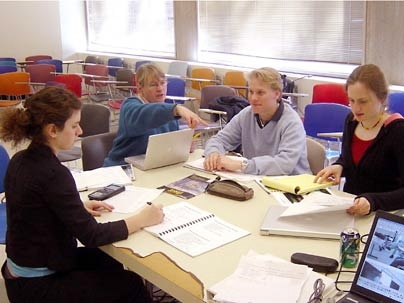Off the coast of the fictitious Isle of Murph, there are four natural gas fields under 400 feet of water. The wells, platforms, pipelines and plants necessary to get at the gas will cost $4 billion and will take years to develop. Should a company invest in this project and drill for the natural gas?
This question was posed to 10 MIT students in the IAP class "Energy: Science, Technology and Sustainable Development," which met Jan. 23-27.
Engineers and scientists working on a project such as this must address the science, technology and sustainable development aspects of the project.
The students, mostly chemical engineering and earth science majors, had the opportunity to design and present their plans for developing this multibillion-dollar offshore natural gas project with the potential to supply energy to more than 3 million households.
Aron Walker, a junior in earth, atmospheric and planetary sciences, helped present his team's recommendation: Go for it, with a plan that benefits all stakeholders and addresses concerns about the project's impact on the environment and local communities. Student teams recommended further detailed study prior to making a major investment in this project.
David Patrick Murphy of Shell Exploration and Production's education division, who co-taught the class, said that the students did an outstanding job in grasping the breadth of a project of this scope. Murphy's fellow teachers were James C. Roberts of Shell International Exploration and Production and Richard A. Sears, a visiting scientist in MIT's Laboratory for Energy and the Environment.
While the search is on at MIT and elsewhere for alternative fuel sources, Sears pointed out that oil and gas are going to be with us for the foreseeable future. "If the switch from conventional hydrocarbons started now, it would take nearly half a century to get there," he said.
A version of this article appeared in MIT Tech Talk on February 1, 2006 (download PDF).






